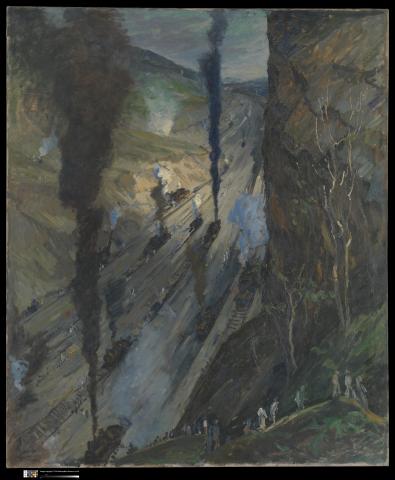
The Conquerors (Culebra Cut, Panama Canal)
In 1903, with Theodore Roosevelt leading negotiations, the new nation of Panama granted the United States the land for a proposed canal. Linking the Atlantic and Pacific Oceans, the Panama Canal ensured U.S. sea power.
U.S.-directed construction for the $352 million project (around $11 billion today) began in 1904, when crews from the West Indies and other countries began carving out 100 million cubic meters of rock and soil. This painting visualizes a section of the nine-mile cut made into the Culebra Mountain and features workers, steam-powered excavating shovels, and a locomotive, as well as hydraulic rock crushers.
More than 5,600 lives were lost during the canal’s construction before it was completed in 1914. The resulting Canal Zone created a divide within the Republic of Panama, as only employees of the canal, the U.S. military, and their families could reside there. The United States treated the Panama Canal Zone as an unincorporated territory until 1979.